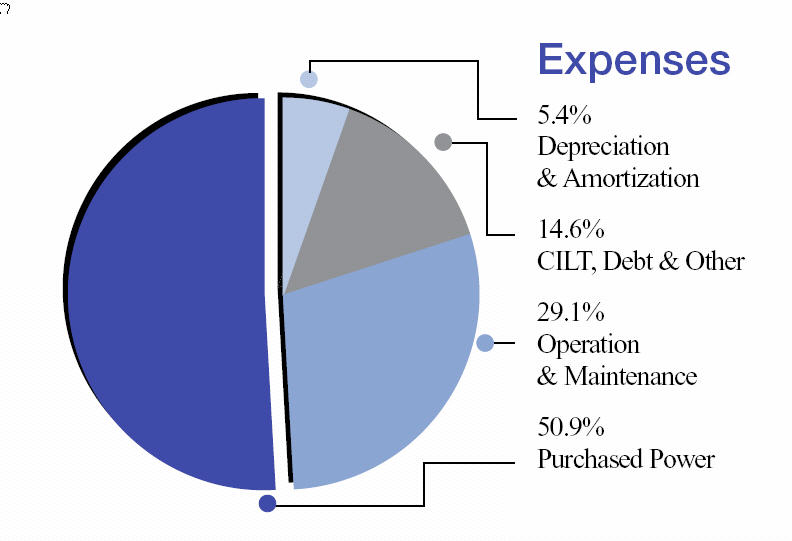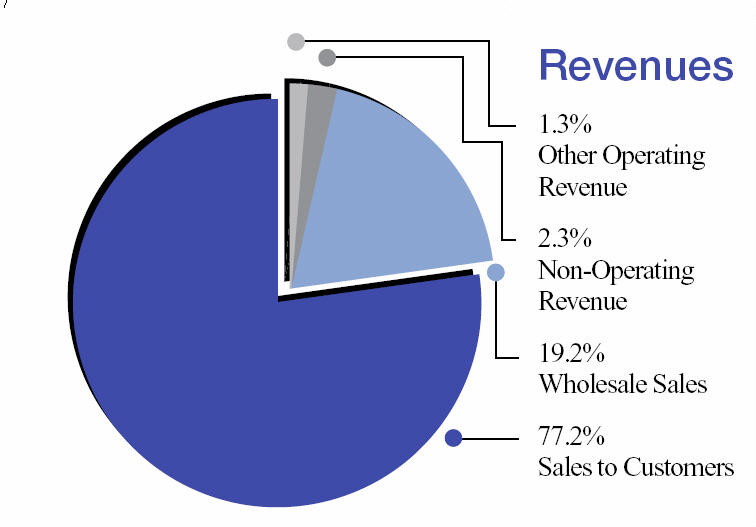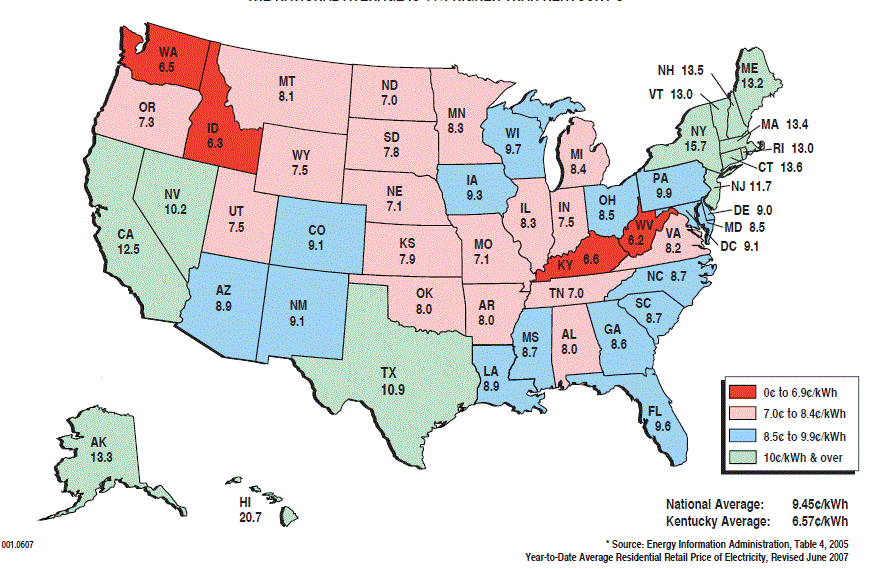
2010 Snapshot

Most of you are familiar with Power and you frequently confuse that with energy.
For instance, if you have a 100 Watt light bulb and you plug it in, that light bulb radiates 100 Watts of Power . Power is instantaneous or, in other words, at any given time while the light bulb is on, it radiates 100 Watts of Power.
However, what we care about is Energy and
Thus if we use our 100 watt light bulb for 1 hour we have used the equivalent of 100 watts * 1 hour = 100 watt hours of ENERGY.
For residential, commercial and industrial energy use, the standard metered rate used by all electrical utilites in the US is the KiloWatt Hour (KWH)
If we use our 100 Watt light bulb for 10 hours then that is 100 watts x 10 hours = 1000 watt hours = 1KWH.
Your electricity rate is charge at some number of cents per KWH.
The current snapshot of residential rates for the US is shown below:

2010 Snapshot

Notes:
Residential Power Requirements:
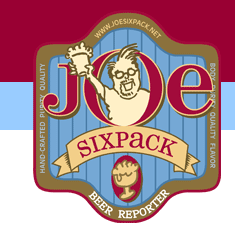
Supposed you lived in a space, let's call it the Joe Six Pack pad, that had the following:
That's it.
So we can easily sum this up to determine that a Joe Six Pack pad has a total maximum power requirement of 2500 Watts or 2.5 KW, if all of the applicances are turned on.
So this is Joe's PEAK POWER REQUIREMENT
Now we know that, at Joe's Place, the fridge and the TV are on ALL OF THE TIME so thats 600 W of continuous power.
Now let's suppose that, averaged over one day, the light bulbs are on for 12 hours and the heater is on for 4 hours per day.
Thus, on an average 24 hour day, Joe's power requirements are
Thus Joe's AVERAGE POWER REQUIREMENT is 600+200+250 = 1050 watts = 1.05 KW.
The next step in this story is to form the Joe Six Pack Electrical
Utility Company.
Our company is located in Joe Sixpackville and there are 1000 Joes
that live in the pad du Joe.
What do we know?
Well we know that our power plant rating (usually called nameplate
capacity) needs to be at least 1000 KW or 1 Megawatt (MW).
Why - because we got 1000 average Joes each using 1 KW.
If we built our plant to handle the peak capacity that would require
a 2.5 MW facility, which would cost 2.5n more. This is not
cost effective and as a result, Power Plants are built to handle average
loads, not peak loads, since peak loads are a very rare occurence.
When they do happen tho, the industry now has a difficult time accomodating
them. More on this later.
Now let's return to Joe and is average montly electricity bill. For simplicity let's assume the electricity rate is 10 cents per KWH. We can now easily compute Joe's average monthly bill:
Now in the real world, a typical family house has an average power requirement of 2 KW these days, although indivudal houses may vary from 1 to 8 on this scale.
This means the following and this is how we scale things in this class:
 A typical power plant has a nameplate capacity of
1000 MW (1 billion watts)
A typical power plant has a nameplate capacity of
1000 MW (1 billion watts)  This serves,
on average , 500,000 homes.
This serves,
on average , 500,000 homes.
The City of Eugene, for instance, as an average power requirement of 350 MW which is provided through EWEB:
A typical substation in a neighborhood serves about 500 houses and therefore must distribute about 1 MW of power.
Get to know and understand these various scaling relations.
Visual Summary of EWEB Infrastructure and its evolution from 2003 to 2008:
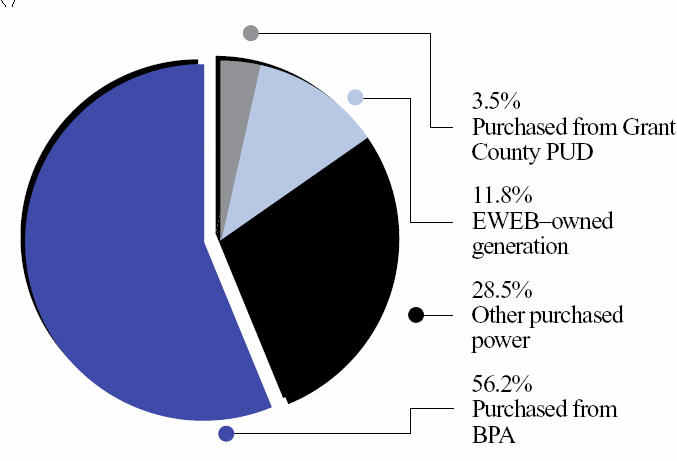
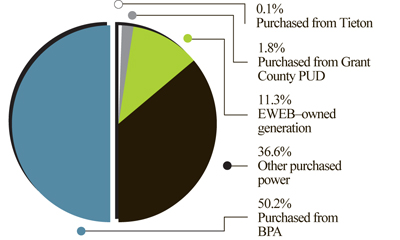
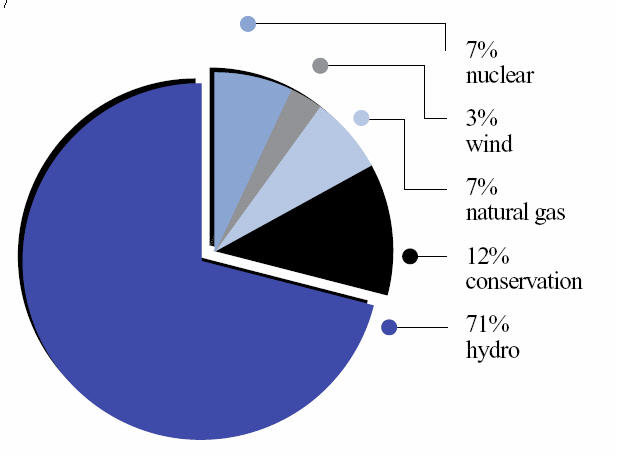
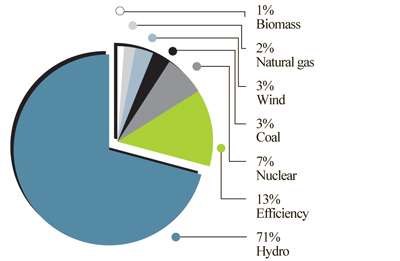
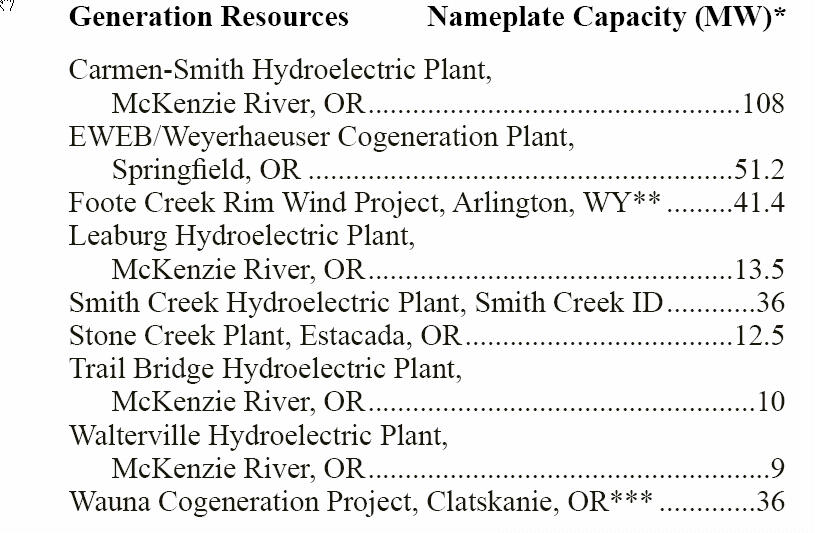
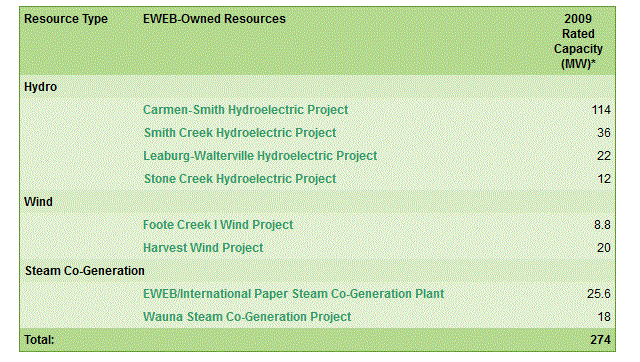
274 Name Plate in 2009
Name Plate in 2011 = 721 -440 = 281
Small Net gain - there are some losses in Steam Co-gen balanced by gains in Wind farm share
Current Situation
Peak vs Average Forecase
But this is Bullshit
Why so little wind?
